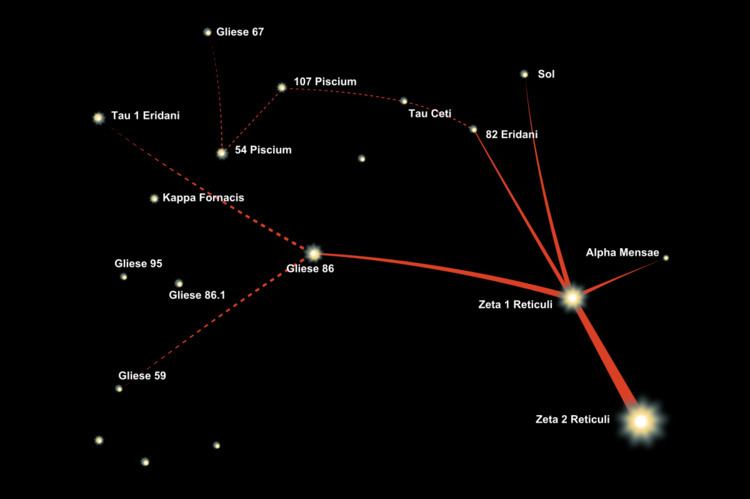 | ||
Paranormal and pseudoscientific claims regarding astronomical bodies involve both bodies recognized by the scientific community and those known only from the claims themselves. A wide variety of movements are represented among those claiming knowledge regarding astronomical bodies gained through nonscientific means. These include astrologers, alien abductees, alien contactees, New Age practitioners UFO religions and more. The types of astronomical bodies discussed by pseudoscientists and paranormal claimants run the gamut from planets to stars, constellation, and galaxies. Many of these claims contradict scientific findings in spectacular ways or show influence from science fiction.
Contents
Unrecognized planets
Pleiades
The Pleiades, or Seven Sisters (Messier object 45), is an open star cluster containing middle-aged hot B-type stars located in the constellation of Taurus. It is among the nearest star clusters to Earth and is the cluster most obvious to the naked eye in the night sky. Various pseudoscientific claims have been made about this star cluster. Erich von Daniken alleged that intelligent extraterretrials traveled from the Pleiades to earth and were worshipped by the Inca as gods.
Eduard "Billy" Meier also claims to have had many contacts with extraterrestrial humanoids originating in the Pleiades star cluster.
Zeta Reticuli
Betty and Barney Hill were an American married couple who claimed to have been abducted by extraterrestrials on September 19–20, 1961. While on board the alien craft, the Hills claim they were subjected to a medical examination. Betty said that when she asked where their abductors were from one showed her a star map, which she later attempted to reproduce. In 1968, Marjorie Fish of Oak Harbor, Ohio read John G. Fuller's Interrupted Journey, a best-selling book on the abduction claim. She was an elementary school teacher and amateur astronomer. Intrigued by the "star map", Fish wondered if it might be "deciphered" to determine which star system the UFO came from.
Assuming that one of the fifteen stars on the map must represent the Earth's sun, Fish constructed a 3-dimensional model of nearby sun-like stars using thread and beads, basing stellar distances on those published in the 1969 Gliese Star Catalog. Studying thousands of vantage points over several years, the only one that seemed to match the Hill map was from the viewpoint of the double star system of Zeta Reticuli. Therefore she concluded that the UFO might have come from a planet orbiting Zeta Reticuli.
As a result of Fish's hypothesis, some have dubbed the Hills' account The Zeta Reticuli Incident. Most Ufologists, however, continue to prefer the Hill Abduction or some similar term.
Distance information needed to match three stars, forming the distinctive triangle Hill said she remembered, was not generally available until the 1969 Gliese Catalog came out. Fish also was the first to note that all the stars on the map connected by lines (which Betty Hill said she was told were trade or frequently-traveled routes) fell in a plane, with Zeta Reticuli acting as a hub. Thus the displayed routes would be the most logical and efficient way of exploring the nearby stellar neighborhood for a civilization located in Zeta Reticuli. These points played critical roles in the subsequent debates over the validity of the Fish match to the Hill map.
Fish sent her analysis to Webb. Agreeing with her conclusions, Webb sent the map to Terence Dickinson, editor of the popular magazine Astronomy. Dickinson did not endorse Fish and Webb's conclusions, but he was intrigued, and, for the first time in the journal's history, Astronomy invited comments and debate on a UFO report, starting with an opening article in the December 1974 issue. For about a year afterward, the opinions page of Astronomy carried arguments for and against Fish's star map. Notable was an argument made by Carl Sagan and Stephen Soter, arguing that the seeming "star map" was little more than a random alignment of chance points. In contrast, those more favorable to the map, such as Dr. David Saunders, a statistician who had been on the Condon UFO study, argued that unusual alignment of key sun-like stars in a plane centered around Zeta Reticuli (first described by Fish) was statistically improbable to have happened by chance from a random group of stars in our immediate neighborhood.
Skeptic Robert Sheaffer in an accompanying article said that a map devised by Charles W. Atterberg, about the same time as Fish, was an even better match to Hill's map and made more sense. The base stars, Epsilon Indi and Epsilon Eridani, plus the others were also closer to the sun than the Hill map. Fish counterargued that the base stars in the Atterberg map were considered much less likely to harbor life than Zeta Reticuli and the map lacked a consistent grouping of sun-like stars along the lined routes.
Unrecognized extrasolar planets
The following is a list of alleged extrasolar planets not proposed or verified by researchers doing mainstream science.
